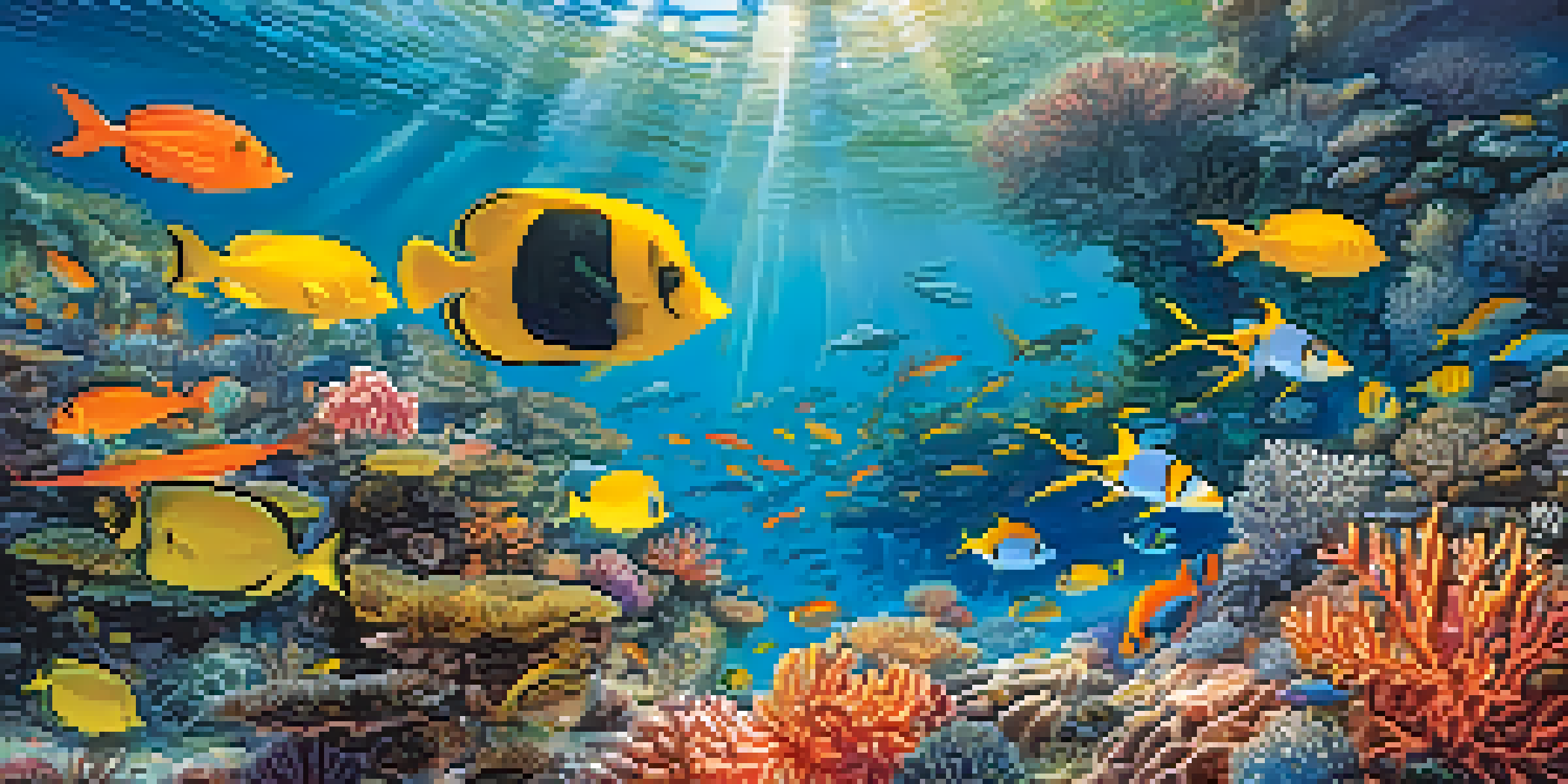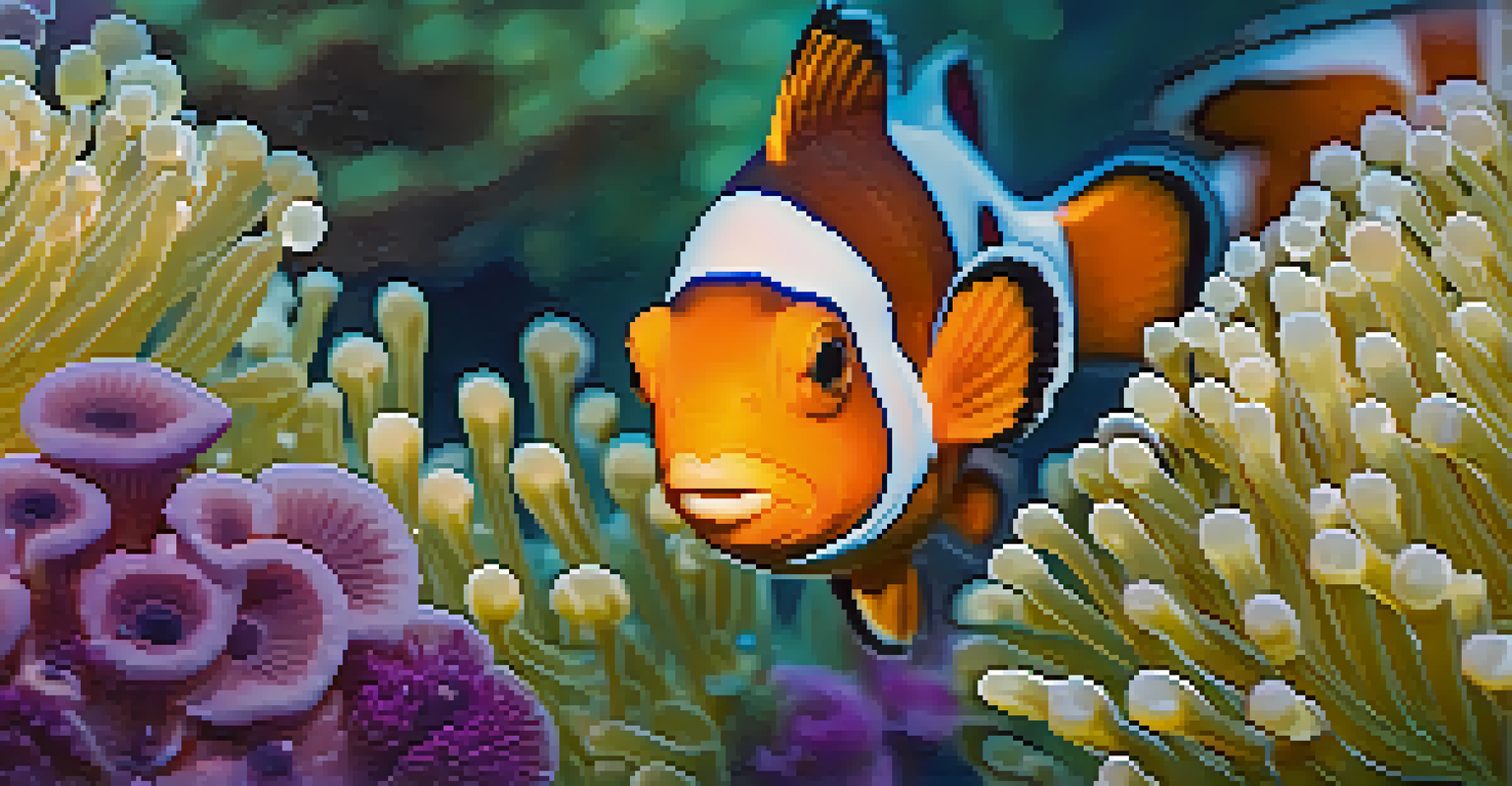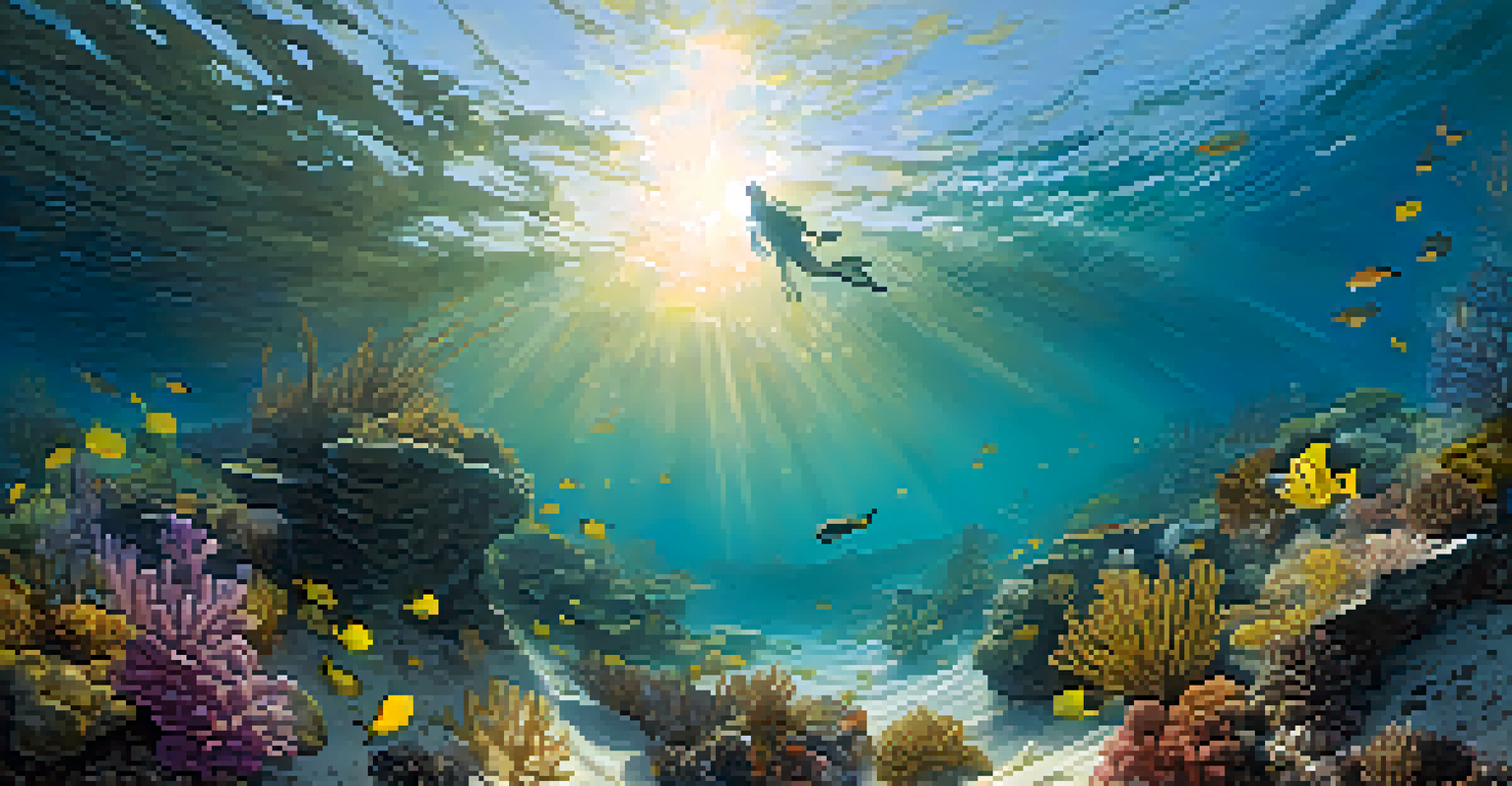Underwater Photography Expeditions: A Guide for Enthusiasts

Understanding Underwater Photography: A Brief Overview
Underwater photography is a captivating art form that captures the beauty of marine life and underwater landscapes. It allows photographers to explore an entirely different world, showcasing vibrant colors and unique ecosystems. Understanding the basics is crucial, as the underwater environment presents unique challenges and opportunities.
Photography is the story I fail to put into words.
One of the first things to consider is how light behaves underwater. As you descend, colors change, with reds disappearing first, which can affect your photography. This is why many underwater photographers rely on artificial lighting or filters to enhance their images and bring out the true colors of the scene.
Additionally, familiarity with your camera equipment and settings is essential. Whether you’re using a DSLR with a housing or a compact camera, knowing how to adjust your settings for water conditions can make a significant difference in your shots.
Choosing the Right Equipment for Underwater Photography
Selecting the right equipment is vital for successful underwater photography expeditions. You’ll need a good camera, housing, and lighting to capture stunning images. Popular choices include DSLRs or mirrorless cameras, which offer flexibility and high image quality.

Don’t forget about the housing! It protects your camera from water damage while allowing you to access all the necessary controls. Depending on your budget, you can find options ranging from affordable plastic housings to professional-grade aluminum cases that offer greater durability.
Mastering Equipment is Essential
Choosing the right camera, housing, and accessories is crucial for capturing stunning underwater images.
Lastly, consider additional accessories like underwater strobes, filters, and wide-angle lenses. These can help you capture more dynamic shots and enhance the beauty of underwater scenes, making your photos pop with color and depth.
Preparing for Your Expedition: Planning and Safety
Preparation is key for a successful underwater photography expedition, and it starts long before you hit the water. Researching your destination will help you understand the local marine life, currents, and visibility conditions. This knowledge can significantly impact your planning and the types of shots you hope to achieve.
The camera is an instrument that teaches people how to see without a camera.
Safety should always be a priority. Familiarize yourself with diving protocols, and ensure you’re certified if you’re diving deep. It's also wise to dive with a buddy or a guide who knows the area, as they can help you navigate potential hazards and find the best spots for photography.
Lastly, make sure your equipment is well-maintained and ready for use. Check your gear for any leaks or issues, and practice using your camera in shallow water before the expedition. This way, you’ll feel confident when it’s time to dive deeper.
Techniques for Capturing Stunning Underwater Images
Once you’re in the water, applying the right techniques can elevate your underwater photography. Start by getting as close as possible to your subject, as this minimizes the water between you and your shot, resulting in clearer images. Use a wide-angle lens to capture expansive seascapes or a macro lens for detailed close-ups.
Don’t underestimate the power of composition. Just like in traditional photography, the rule of thirds can help create more balanced and visually appealing images. Experiment with angles and perspectives to add interest to your shots, whether you’re capturing a school of fish or a vibrant coral reef.
Preparation and Safety Matter
Thorough planning and adherence to safety protocols are vital for a successful underwater photography expedition.
Finally, be mindful of your buoyancy. Maintaining control while hovering can help you avoid disturbing marine life and sediment, which can cloud your images. Practice your buoyancy skills to ensure you’re not only a better photographer but also a responsible diver.
Post-Processing: Enhancing Your Underwater Photos
Post-processing is an essential step in bringing your underwater photos to life. Software like Adobe Lightroom or Photoshop allows you to adjust exposure, contrast, and color balance, helping to correct any issues caused by underwater conditions. This can be especially important for images that may appear too blue or green.
Consider using filters or presets designed for underwater photography, as these can help you achieve a more natural look. Correcting colors and enhancing details will make your images stand out, ensuring they reflect the beauty of the underwater world.
Remember, the goal of post-processing is to enhance your images without overdoing it. Strive for a balance that keeps your photos looking natural while showcasing the stunning colors and details that make underwater photography so unique.
Ethics of Underwater Photography: Respecting Marine Life
As underwater photographers, it's crucial to understand the ethical considerations of capturing images in marine environments. Respect for wildlife and habitats should always come first. Avoid touching or disturbing marine life, as this can stress animals and damage delicate ecosystems.
Additionally, be mindful of your surroundings. Stay off coral reefs and avoid kicking up sediment, as this can harm the environment and reduce visibility for other divers. Practice good diving etiquette, and remember that your presence in the underwater world should be as gentle as possible.
Respect Marine Life Ethics
Ethical underwater photography involves respecting wildlife and their habitats to preserve delicate ecosystems.
Lastly, consider sharing your knowledge and passion for underwater photography with others. Promoting awareness about marine conservation can help protect these beautiful environments for future generations to enjoy.
Joining a Community of Underwater Photography Enthusiasts
Connecting with other underwater photography enthusiasts can be incredibly beneficial for your growth as a photographer. Online forums, social media groups, and local clubs provide platforms for sharing experiences, tips, and critiques. Engaging with others can spark new ideas and motivate you to improve your skills.
Attending workshops or photography trips can also enhance your learning experience. These events often include hands-on instruction from experienced photographers, allowing you to refine your techniques in a supportive environment. Plus, they’re a great way to meet like-minded individuals who share your passion.

Finally, consider entering competitions or exhibitions showcasing underwater photography. Not only can this provide recognition for your work, but it can also inspire you to push your creative boundaries and explore new ideas in your photography journey.